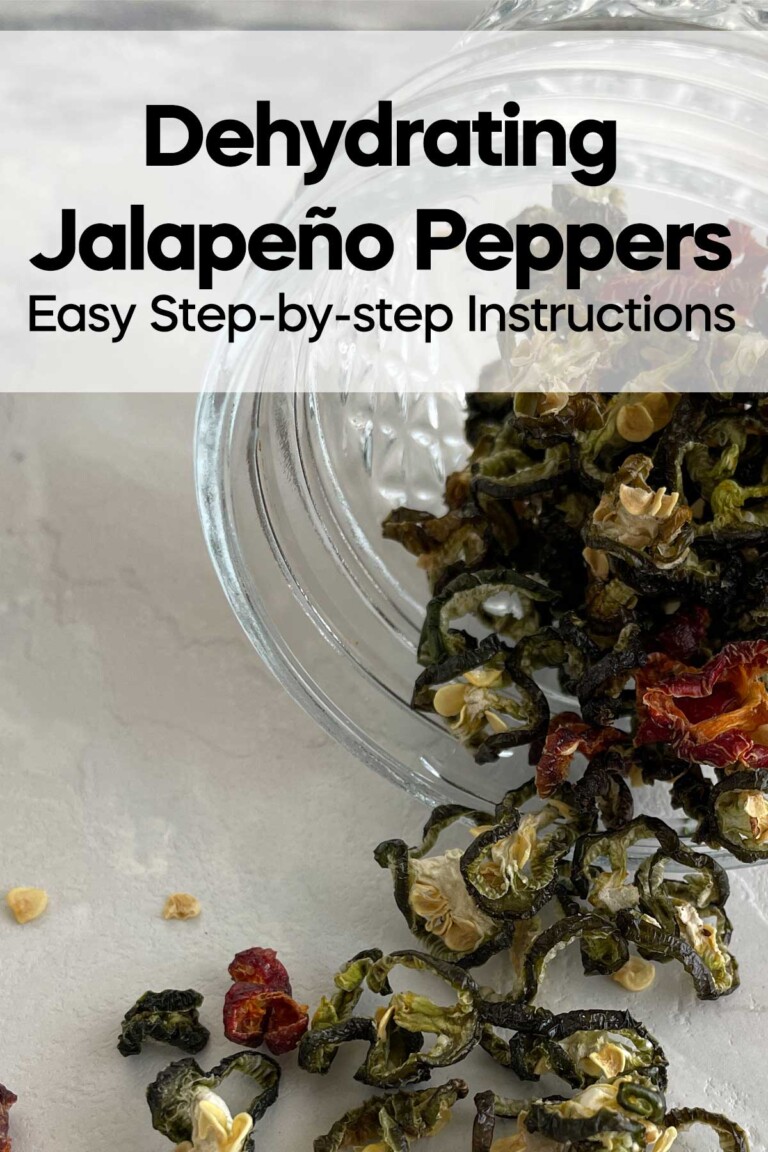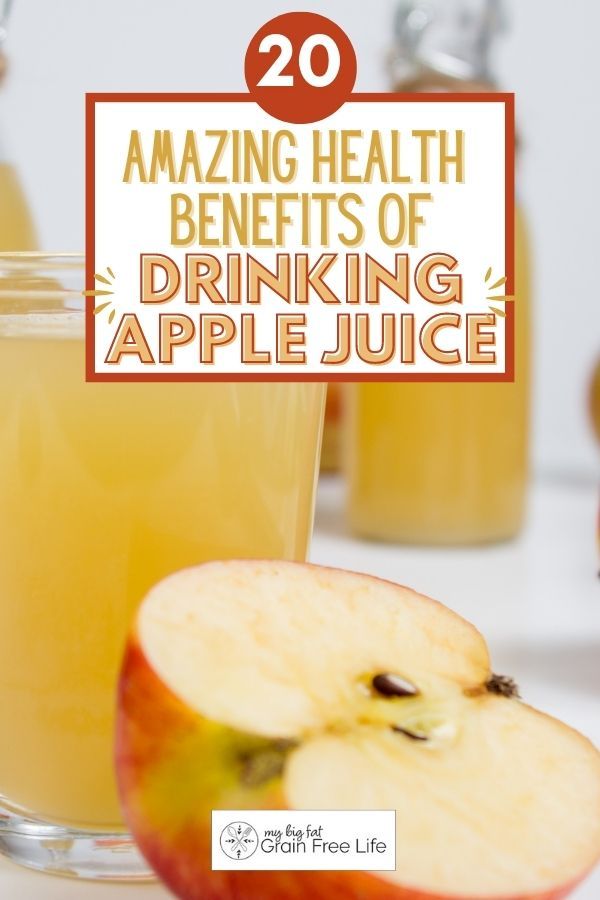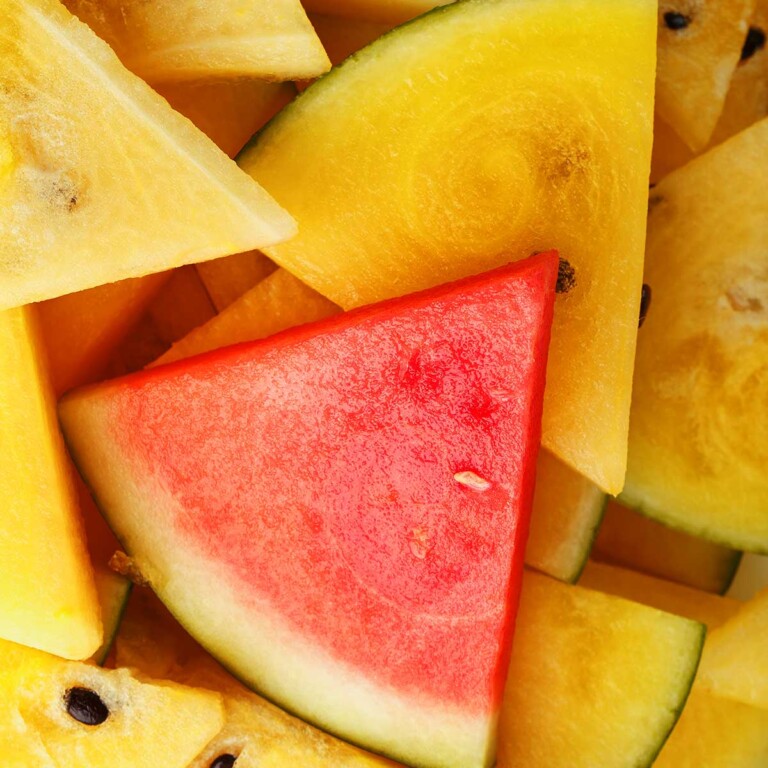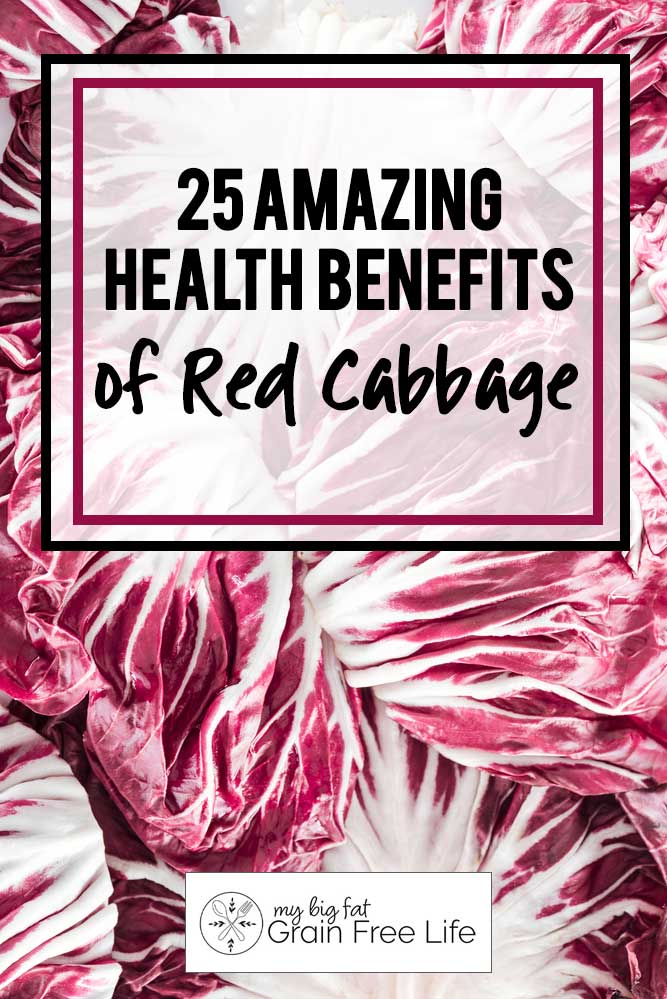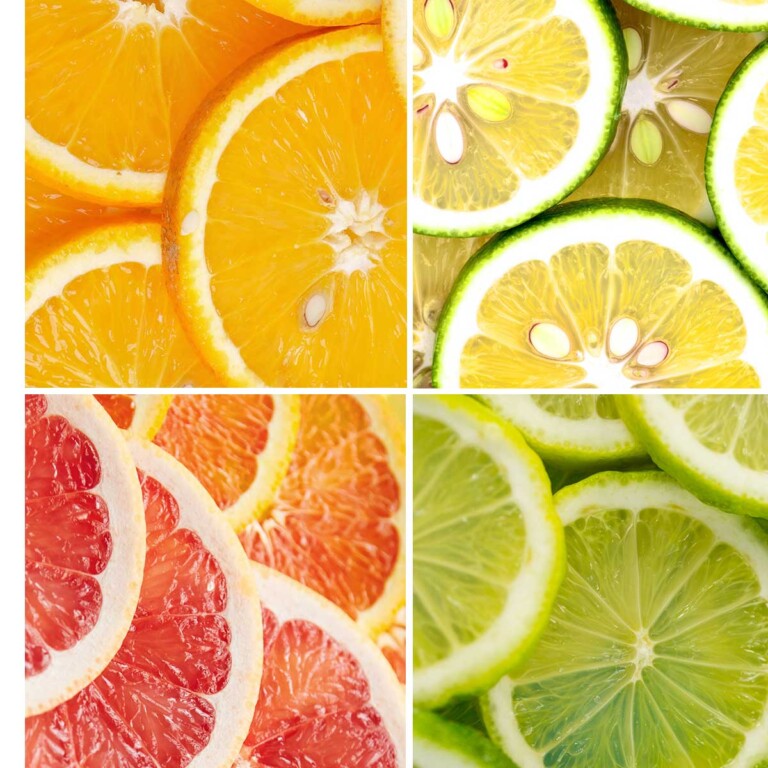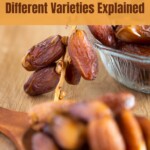40 Types of Dates: Different Varieties Explained
This post may contain affiliate links. If you make purchase after clicking a link, I may receive a commission at no extra cost to you.
Last Updated on February 6, 2024
Discover the rich history and cultural significance of dates, a small but mighty fruit that has been enjoyed for centuries. Learn about 40 different types of dates, and expand your palate with exciting new varieties.
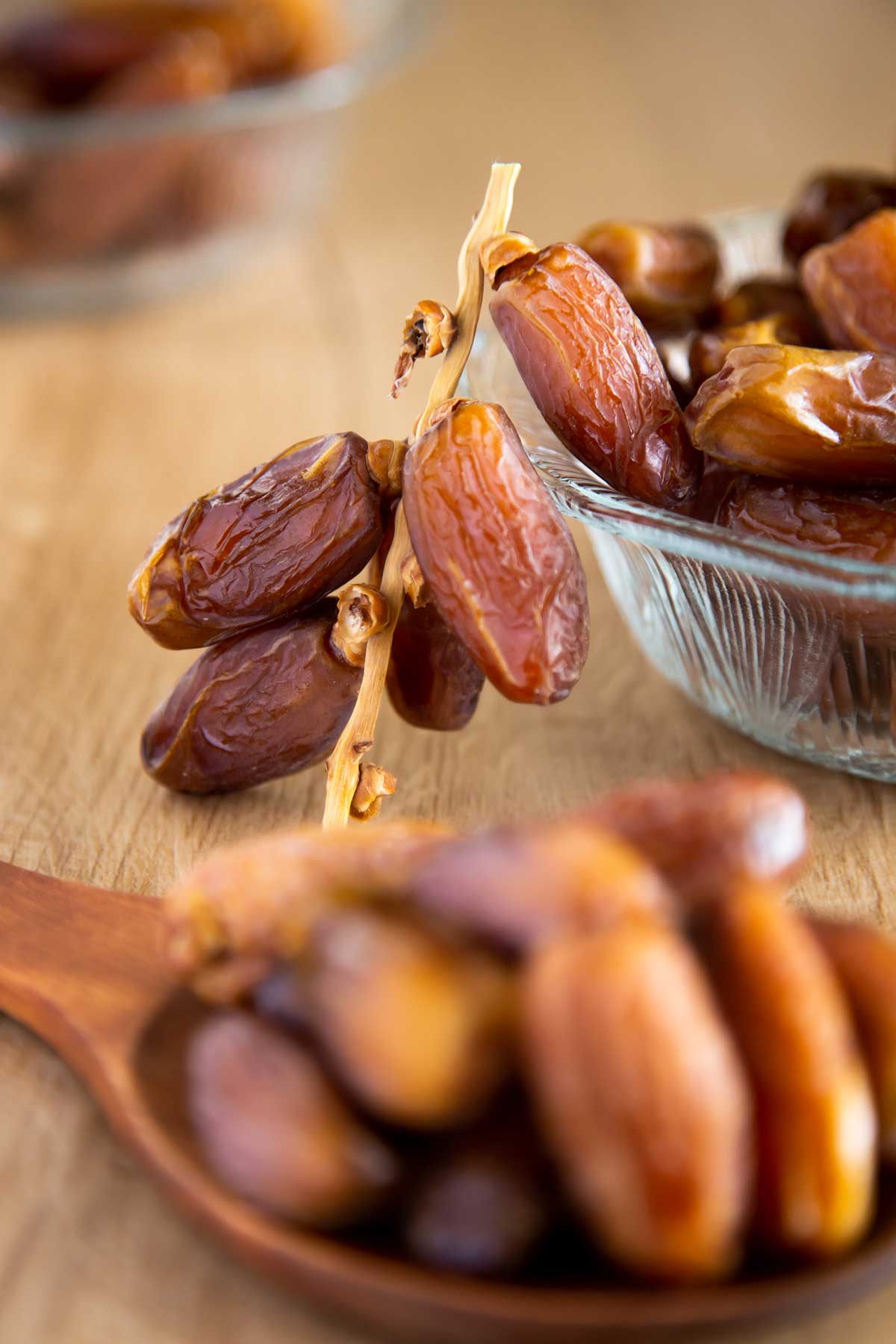
Types of Dates
Did you know there are approximately 3,000 different varieties of dates in the world? Let’s take a look at 40 of the more popular types of dates and compare them for flavors, appearance, cost, and more.
What are Dates?
Dates are a type of fruit that comes from the date palm tree. They have a dark color and a sweet taste, making them a popular natural sweetener in many cuisines.
Origin Of Dates
Dates have been cultivated for thousands of years and are believed to have originated in the Middle East. Various types of dates have been an important part of the diet in this region for centuries.
Nutrition Information
Dates are packed with essential nutrients such as fiber, potassium, magnesium, and vitamin B6. They also contain antioxidants, which can help protect against cell damage.
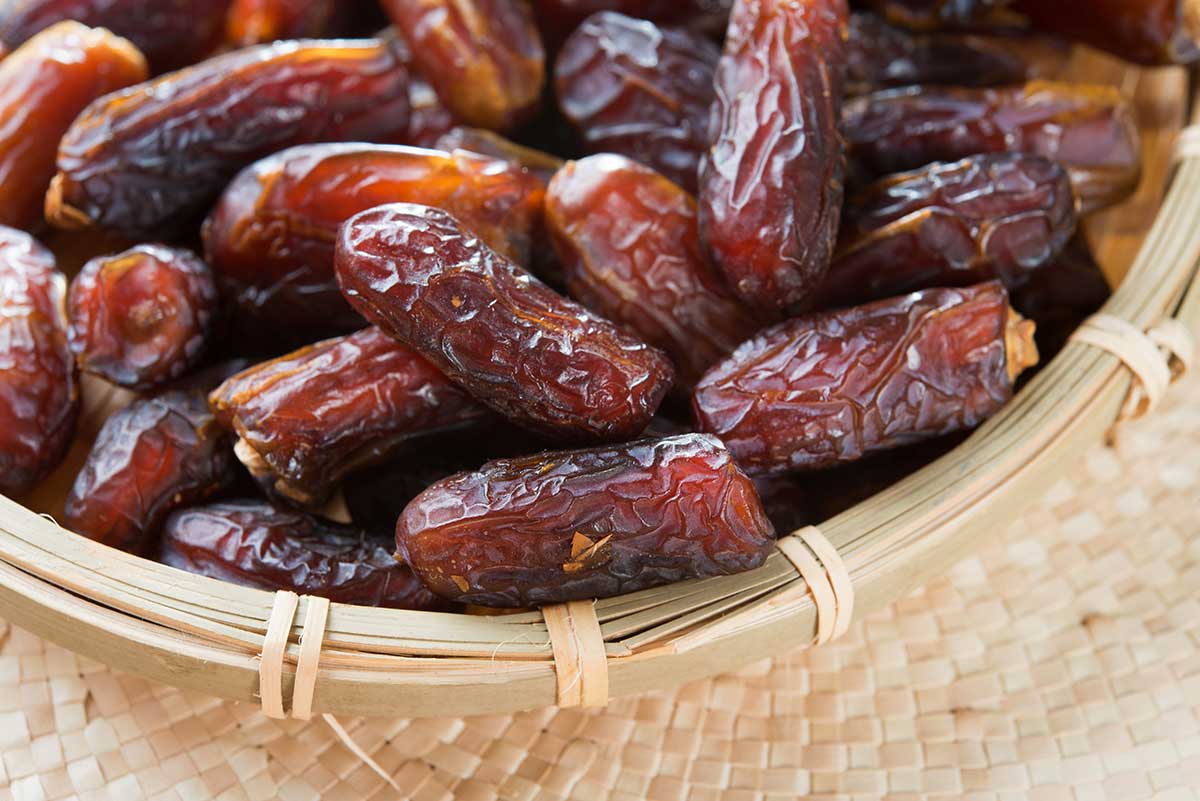
Types of Dates
Here are 40 of the more popular types of dates and a breakdown of where each is grown, how it tastes, the appearance, size, cost, and interesting facts.
Medjool Dates
- Where it’s grown: Medjool dates are primarily grown in the Middle East, especially in countries like Saudi Arabia, Jordan, and Israel.
- Taste: Medjool dates have a rich, sweet caramel-like flavor with a hint of molasses.
- Color and appearance: They are large in size and have a soft, wrinkled texture. The color ranges from amber to dark brown.
- Size in relation to other dates: Medjool dates are one of the largest varieties of dates.
- Cost in comparison to other dates: Medjool dates tend to be more expensive than other date varieties due to their size and superior taste.
- Interesting facts: Medjool dates were historically reserved for Moroccan royalty and were considered a luxury fruit.
Deglet Noor Dates
- Where it’s grown: Deglet Noor dates are mainly grown in Tunisia but can also be found in Algeria, California, and Arizona.
- Taste: Deglet Noor dates have a delicate sweetness with a slightly nutty flavor.
- Color and appearance: They are medium-sized with a firm texture. The color ranges from light amber to golden brown.
- Size in relation to other dates: Deglet Noor dates are smaller compared to Medjool but larger than some other varieties like Ambera or Chinese dates.
- Cost in comparison to other dates: Deglet Noor dates are usually more affordable compared to Medjool but may vary depending on the region.
- Other names it goes by: Deglet Noor dates are sometimes referred to as the Queen of Dates.
- Interesting facts: Deglet Noor means date of light in Arabic, referring to their translucent appearance when held up to the light.
Ambera Dates
- Where it’s grown: Ambera dates are predominantly grown in Saudi Arabia and other Middle Eastern countries.
- Taste: Ambera dates have a rich, honey-like sweetness with a soft and chewy texture.
- Color and appearance: They are medium-sized with an amber or golden color. The skin is slightly wrinkled.
- Size in relation to other dates: Ambera dates are smaller compared to Medjool but larger than some other varieties like Deglet Noor or Chinese dates.
- Cost in comparison to other dates: The cost of Ambera dates can vary but is generally mid-range among different date varieties.
- Interesting facts: Ambera dates are known for their high sugar content which gives them their intense sweetness.
Chinese Dates
- Where it’s grown: Chinese dates (Jujubes) are primarily grown in China but can also be found in other Asian countries like Korea and India.
- Taste: Chinese dates have a sweet and tangy flavor, similar to an apple or pear.
- Color and appearance: They are small to medium-sized with a reddish-brown color. The skin is smooth and glossy.
- Size in relation to other dates: Chinese dates are smaller compared to Medjool, Deglet Noor, Ambera, or Harmony dates.
- Cost in comparison to other dates: Chinese dates are usually more affordable compared to larger date varieties like Medjool or Deglet Noor.
- Common uses: They are often added to soups, stews, or herbal teas for their unique flavor and medicinal properties.
- Other names it goes by: Chinese dates are also known as Jujubes or Red Dates.
- Interesting facts: In traditional Chinese medicine, jujubes are believed to have calming properties and improve digestion. Chinese dates are also known for their adaptogenic properties and are used in traditional medicine for various purposes.
Ajwa Dates
- Where it’s grown: Ajwa dates are primarily grown in Medina, Saudi Arabia.
- Taste: Ajwa dates have a rich and distinct flavor with a slightly dry texture. They have hints of caramel and chocolate notes.
- Color and appearance: They are small-sized with a dark brown to black color. The skin is smooth but not glossy.
- Size in relation to other dates: Ajwa dates are relatively small compared to most other date varieties on this list.
- Cost in comparison to other dates: Ajwa dates tend to be higher priced due to their rarity and unique taste profile.
- Interesting facts: Ajwa dates hold religious significance in Islam and are mentioned in Islamic texts for their health benefits.
Harmony Dates
- Where it’s grown: Harmony dates are primarily grown in Tunisia, North Africa.
- Taste: Harmony dates have a sweet and mildly fruity flavor with a soft and chewy texture.
- Color and appearance: They are medium-sized with a golden-brown color. The skin is smooth but slightly wrinkled.
- Size in relation to other dates: Harmony dates are smaller compared to Medjool but larger than some other varieties like Deglet Noor or Chinese dates.
- Cost in comparison to other dates: The cost of Harmony dates can vary but is generally mid-range among different date varieties.
- Interesting facts: Tunisian cuisine often includes Harmony dates in various dishes due to their local availability.
Fardh Dates
- Where it’s grown: Fardh (also known as Thoory) dates are primarily grown in Saudi Arabia, Egypt, and Iraq.
- Taste: Fardh dates have a mild sweetness with a rich nutty flavor reminiscent of roasted peanuts or almonds.
- Color and appearance: They are medium-sized with a dark brown color. The skin is slightly wrinkled.
- Size in relation to other dates: Fardh dates are smaller compared to Medjool, Deglet Noor, Ambera, or Harmony dates.
- Cost in comparison to other dates: Fardh dates are usually more affordable compared to larger date varieties like Medjool or Deglet Noor.
- Other names it goes by: Fardh dates are also known as Thoory dates.
- Interesting facts: Fardh dates have a unique taste profile that makes them popular among date enthusiasts.
Honey Dates
- Where it’s grown: Honey dates (also known as Khalas) are primarily grown in Saudi Arabia but can also be found in other Middle Eastern countries.
- Taste: Honey dates have a sweet and caramel-like flavor with a soft and chewy texture.
- Color and appearance: They are medium-sized with an amber-brown color. The skin is smooth but slightly wrinkled.
- Size in relation to other dates: Honey dates are smaller compared to Medjool but larger than some other varieties like Deglet Noor or Chinese dates.
- Cost in comparison to other dates: The cost of Honey dates can vary but is generally mid-range among different date varieties.
- Other names it goes by: Honey dates are also known as Khalas dates.
- Interesting facts: Honey dates are highly regarded for their rich flavor and are often referred to as the queen of dates in Saudi Arabia.
Hayani Dates
- Where it’s grown: Hayani dates are primarily grown in Egypt but can also be found in other Middle Eastern countries.
- Taste: Hayani dates have a sweet and mildly fruity flavor with a soft and chewy texture.
- Color and appearance: They are medium-sized with a dark brown color. The skin is smooth but slightly wrinkled.
- Size in relation to other dates: Hayani dates are smaller compared to Medjool, Deglet Noor, Ambera, or Harmony dates.
- Cost in comparison to other dates: Hayani dates are usually more affordable compared to larger date varieties like Medjool or Deglet Noor.
- Interesting facts: Egyptian cuisine often incorporates Hayani dates into traditional dishes due to their local availability.
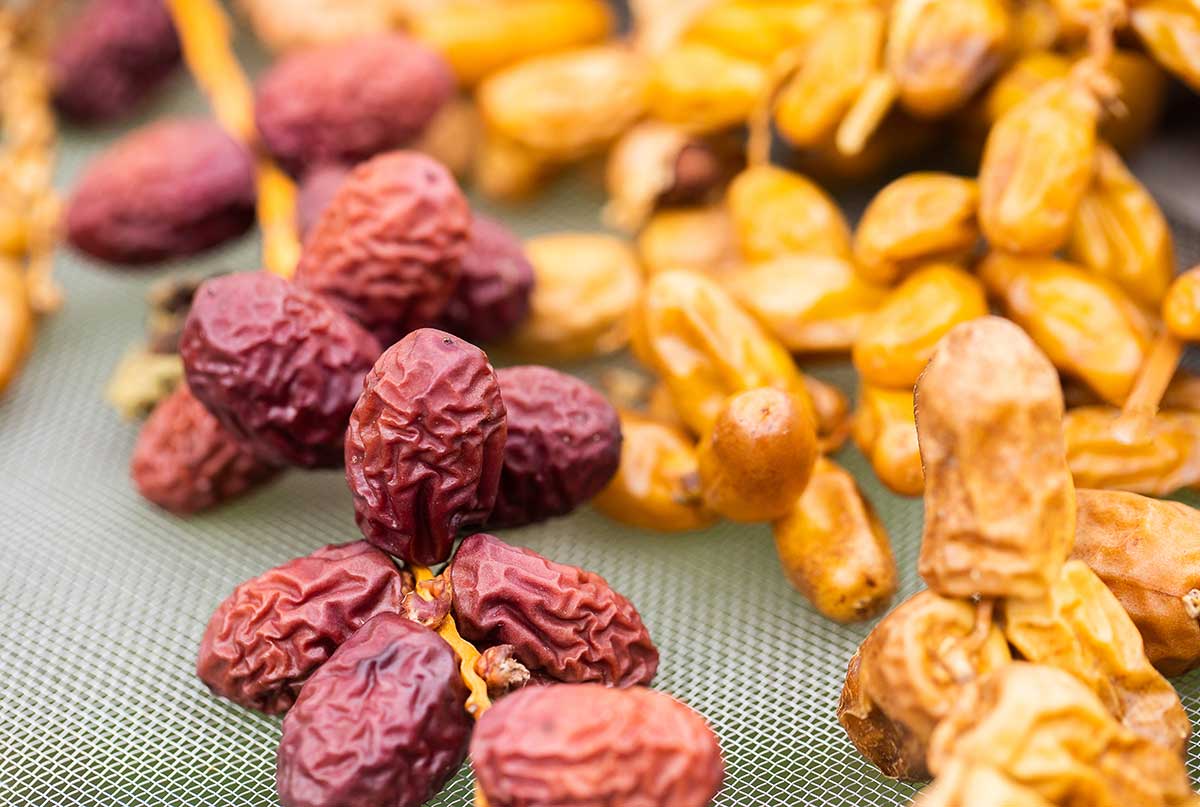
Piarom Dates
- Where it’s grown: Piarom (also known as Maryami) dates are primarily grown in Iran, particularly in the Hormozgan province.
- Taste: Piarom dates have a rich and intense caramel-like flavor with a soft and chewy texture.
- Color and appearance: They are medium-sized with a dark brown to almost black color. The skin is smooth but slightly wrinkled.
- Size in relation to other dates: Piarom dates are smaller compared to Medjool but larger than some other varieties like Deglet Noor or Chinese dates.
- Cost in comparison to other dates: Piarom dates are often considered one of the more expensive date varieties due to their unique taste and limited availability.
- Other names it goes by: Piarom dates are also known as Maryami dates.
- Interesting facts: Piarom dates are often referred to as the chocolate of dates due to their intense flavor resembling dark chocolate.
Mazafati Dates
- Where it’s grown: Mazafati (also known as Bam) dates are primarily grown in Iran, particularly in the Bam region.
- Taste: Mazafati dates have a sweet and rich flavor with a soft and moist texture.
- Color and appearance: They are medium-sized with a dark brown color. The skin is smooth and shiny.
- Size in relation to other dates: Mazafati dates are smaller compared to Medjool but larger than some other varieties like Deglet Noor or Chinese dates.
- Cost in comparison to other dates: Mazafati dates are usually mid-range priced among different date varieties.
- Other names it goes by: Mazafati dates are also known as Bam dates.
- Interesting facts: Mazafati dates are highly regarded for their quality and are one of the most popular date varieties in Iran.
Barhi Dates
- Where it’s grown: Barhi dates are primarily grown in Iraq but can also be found in other Middle Eastern countries and California, United States.
- Taste: Barhi dates have a sweet and soft honey-like flavor with a slightly crunchy texture when fully ripe.
- Color and appearance: They are medium-sized with a yellow to golden-brown color. The skin is thin and tender.
- Size in relation to other dates: Barhi dates are smaller compared to Medjool, Deglet Noor, Ambera, or Harmony dates.
- Cost in comparison to other dates: Barhi dates are usually mid-range priced among different date varieties.
- Interesting facts: When fully ripe, Barhi dates develop a unique texture where the flesh becomes almost custard-like.
Rabbi Dates
- Where it’s grown: Rabbi dates are primarily grown in Saudi Arabia, particularly in the Al-Qassim region.
- Taste: Rabbi dates have a rich and sweet flavor with hints of caramel and honey.
- Color and appearance: They have a dark brown to black color with a wrinkled texture.
- Size in relation to other dates: Rabbi dates are medium-sized compared to other dates on the list.
- Cost in comparison to other dates: The cost of Rabbi dates is moderate compared to other varieties.
- Other names it goes by: This variety is sometimes referred to as Ajwa or Sukkary Rabia dates.
- Interesting facts: Rabbi dates are highly regarded for their medicinal properties and are often consumed during Ramadan due to their nutritional value.
Sayer Dates
- Where it’s grown: Sayer dates are predominantly grown in Iran, especially in the Khorasan region.
- Taste: Sayer dates have a rich and sweet taste with notes of molasses and caramel.
- Color and appearance: They have a dark brown color with a semi-dry wrinkled texture.
- Size in relation to other dates: Sayer dates are medium-sized compared to other varieties on the list.
- Cost in comparison to other dates: Sayer dates are generally more affordable compared to some premium varieties.
- Other names it goes by: Sayer dates are also known as Estamaran or Estameran dates.
- Interesting facts: Sayer dates are often considered the most popular variety in Iran due to their versatility and long shelf life.
Dayri Dates
- Where it’s grown: Dayri dates are mainly grown in Saudi Arabia, particularly in the Al-Qassim and Al-Ahsa regions.
- Taste: Dayri dates have a mildly sweet flavor with hints of caramel and a subtle nuttiness.
- Color and appearance: They have a dark brown to black color with a soft and wrinkled texture.
- Size in relation to other dates: Dayri dates are large-sized compared to most other varieties on the list.
- Cost in comparison to other dates: The cost of Dayri dates is generally moderate compared to other premium varieties.
- Other names it goes by: This variety is sometimes referred to as Thoori or Thur dates.
- Interesting facts: Dayri dates are known for their high moisture content, making them exceptionally soft and juicy.
Mabroom Dates
- Where it’s grown: Mabroom dates are primarily grown in Saudi Arabia, especially in the Al-Ahsa region.
- Taste: Mabroom dates have a rich and sweet flavor with notes of caramel, honey, and butterscotch.
- Color and appearance: They have an amber-brown color with a firm yet chewy texture.
- Size in relation to other dates: Mabroom dates are large-sized compared to most other varieties on the list.
- Cost in comparison to other dates: The cost of Mabroom dates is generally higher due to their premium quality.
- Other names it goes by: This variety is sometimes referred to as Mazafati or Al-Khodary dates.
- Interesting facts: Mabroom dates are highly prized for their exceptional taste and texture, making them a popular choice during festive occasions. They are often paired with cheese and nuts.
Maktoom Dates
- Where it’s grown: Maktoom dates are primarily grown in Saudi Arabia, especially in the Al-Ahsa region.
- Taste: Maktoom dates have a sweet and rich flavor with notes of caramel and molasses.
- Color and appearance: They have a dark brown color with a soft and chewy texture.
- Size in relation to other dates: Maktoom dates are medium-sized compared to most other varieties on the list.
- Cost in comparison to other dates: The cost of Maktoom dates is generally moderate compared to some premium varieties.
- Other names it goes by: This variety is sometimes referred to as Maqtum or Maktoum dates.
- Interesting facts: Maktoom dates are known for their versatility and ability to complement both sweet and savory dishes.
Halawi Dates
- Where it’s grown: Halawi dates are primarily grown in Egypt and Saudi Arabia, particularly in the Al-Madina region.
- Taste: Halawi dates have a sweet and buttery flavor with caramel undertones.
- Color and appearance: They have a light to medium brown color with a soft and chewy texture.
- Size in relation to other dates: Halawi dates are medium-sized compared to most other varieties on the list.
- Cost in comparison to other dates: The cost of Halawi dates is generally moderate compared to some premium varieties.
- Other names it goes by: This variety is sometimes referred to as Hallawy or Helwa dates.
- Interesting facts: Halawi dates are known for their distinctive taste and are considered one of the best dessert varieties. They are often made into date squares or energy bars.
Sukkary Dates
- Where it’s grown: Sukkary dates are primarily grown in Saudi Arabia, particularly in the Al-Qassim region.
- Taste: Sukkary dates have an exceptionally sweet flavor with hints of honey and butterscotch.
- Color and appearance: They have a golden-brown color with a soft and moist texture.
- Size in relation to other dates: Sukkary dates are large-sized compared to most other varieties on the list.
- Cost in comparison to other dates: The cost of Sukkary dates is generally higher due to their premium quality.
- Other names it goes by: This variety is sometimes referred to as Sukari or Sugary dates.
- Interesting facts: Sukkary dates are highly prized for their exceptional sweetness and are considered a delicacy.
Khudri Dates
- Where it’s grown: Khudri dates are primarily grown in Saudi Arabia, particularly in the Al-Ahsa region.
- Taste: Khudri dates have a mildly sweet flavor with notes of caramel and a slight nuttiness.
- Color and appearance: They have a dark brown color with a soft and chewy texture.
- Size in relation to other dates: Khudri dates are medium-sized compared to most other varieties on the list.
- Cost in comparison to other dates: The cost of Khudri dates is generally moderate compared to some premium varieties.
- Other names it goes by: This variety is sometimes referred to as Khadrawi or Al-Khodari dates.
- Interesting facts: Khudri dates are known for their versatility and are often used in traditional Middle Eastern cuisine. This date is often made into date syrup.
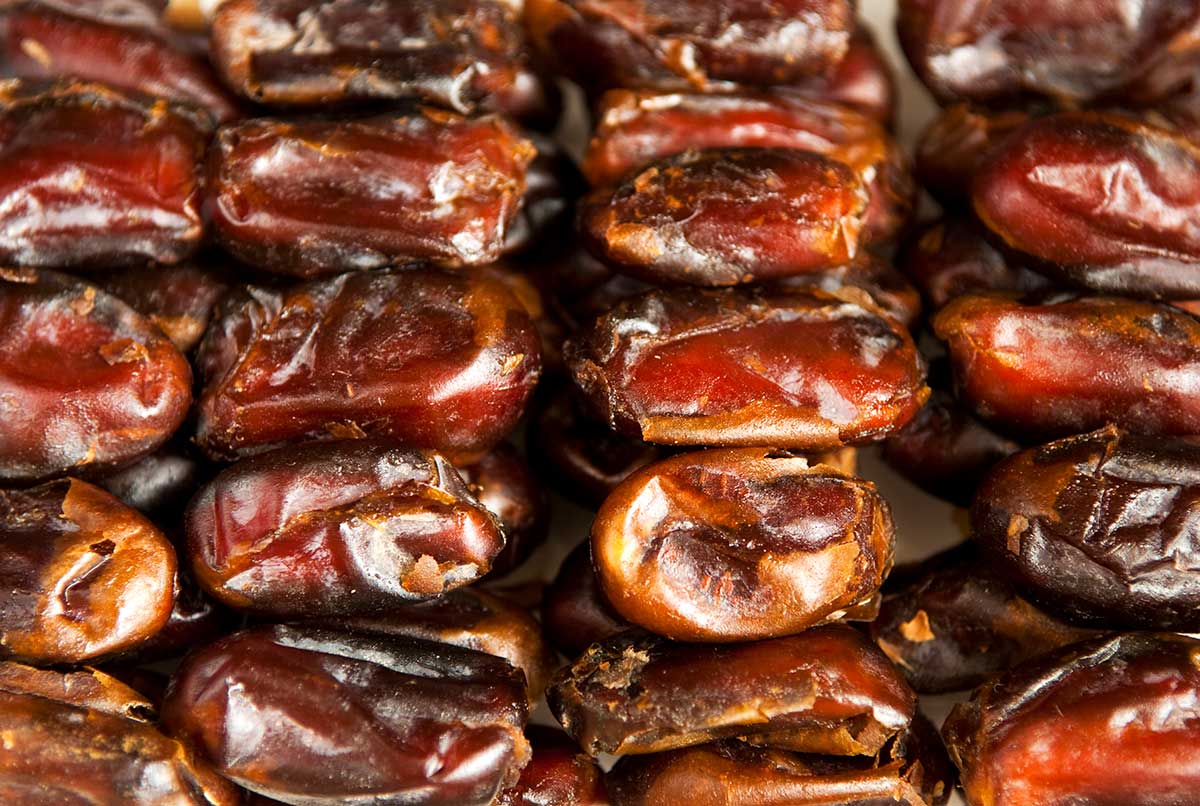
Zahidi Dates
- Where it’s grown: Zahidi dates are primarily grown in Saudi Arabia, particularly in the Al-Madina region.
- Taste: Zahidi dates have a mild and slightly sweet taste with hints of honey and vanilla.
- Color and appearance: They have a light golden-brown color with a firm yet chewy texture.
- Size in relation to other dates: Zahidi dates are medium-sized compared to most other varieties on the list.
- Cost in comparison to other dates: The cost of Zahidi dates is generally moderate compared to some premium varieties.
- Other names it goes by: This variety is sometimes referred to as Zahdi or Zahedi dates.
- Interesting facts: Zahidi dates are known for their long shelf life and are commonly used during religious observances.
Kalmi Dates
- Where it’s grown: Kalmi dates are primarily grown in Saudi Arabia, particularly in the Al-Ahsa region.
- Taste: Kalmi dates have a sweet and caramel-like flavor with hints of molasses and a chewy texture.
- Color and appearance: They have a dark brown color with a firm yet moist texture.
- Size in relation to other dates: Kalmi dates are medium-sized compared to most other varieties on the list.
- Cost in comparison to other dates: The cost of Kalmi dates is generally moderate compared to some premium varieties.
- Other names it goes by: This variety is sometimes referred to as Kalma or Al-Kalami dates.
- Interesting facts: Kalmi dates are known for their unique taste and are often enjoyed during special occasions and celebrations. They are commpnly stuffed with nuts or cheese.
Sukkari Dates
- Where it’s grown: Sukkari dates are primarily grown in Saudi Arabia, particularly in the Al-Qassim region.
- Taste: Sukkari dates have a delicate and sweet flavor with notes of caramel and honey.
- Color and appearance: They have a light golden-brown color with a soft and moist texture.
- Size in relation to other dates: Sukkari dates are large-sized compared to most other varieties on the list.
- Cost in comparison to other dates: The cost of Sukkari dates is generally higher due to their premium quality.
- Other names it goes by: This variety is sometimes referred to as Sokkary or Sugary dates.
- Interesting facts: Sukkari dates are highly prized for their exceptional sweetness and are considered a delicacy.
Kenta Dates
- Where it’s grown: Kenta dates are primarily grown in Sudan, particularly in the Nile River area.
- Taste: Kenta dates have a rich and sweet flavor with hints of caramel and molasses.
- Color and appearance: They have a dark brown color with a soft yet chewy texture.
- Size in relation to other dates: Kenta dates are medium-sized compared to most other varieties on the list.
- Cost in comparison to other dates: The cost of Kenta dates is generally moderate compared to some premium varieties.
- Other names it goes by: This variety is sometimes referred to as Kentawi or Al-Khalaas dates.
- Interesting facts: Kenta dates are highly valued in Sudan and are an integral part of the country’s cultural and culinary heritage.
Persian Dates
- Where it’s grown: Persian dates are primarily grown in Iran, particularly in the regions of Bam and Khuzestan.
- Taste: Persian dates have a sweet and rich flavor with notes of caramel, honey, and molasses.
- Color and appearance: They have a dark brown to black color with a soft and moist texture.
- Size in relation to other dates: Persian dates can vary in size from small to large depending on the variety.
- Cost in comparison to other dates: The cost of Persian dates can vary depending on the variety and quality.
- Other names it goes by: This variety is sometimes referred to as Rabbi or Mazafati dates depending on the specific type.
- Interesting facts: Persian dates have been cultivated for thousands of years and have significant cultural importance in Iranian cuisine.
Marayami Dates
- Where it’s grown: Marayami dates are primarily grown in Saudi Arabia, particularly in the Al-Ahsa region.
- Taste: Marayami dates have a mildly sweet flavor with hints of caramel and butterscotch.
- Color and appearance: They have a light golden-brown color with a soft and moist texture.
- Size in relation to other dates: Marayami dates are medium-sized compared to most other varieties on the list.
- Cost in comparison to other dates: The cost of Marayami dates is generally moderate compared to some premium varieties.
- Other names it goes by: This variety is sometimes referred to as Maryami or Mareimi dates.
- Interesting facts: Marayami dates are known for their exceptional taste and are highly sought after during the date harvest season.
Safawi Dates
- Where it’s grown: Safawi dates are primarily grown in Saudi Arabia, particularly in the Al-Madina region.
- Taste: Safawi dates have a sweet and rich flavor with notes of caramel and chocolate.
- Color and appearance: They have a dark brown to black color with a soft and moist texture.
- Size in relation to other dates: Safawi dates are medium-sized compared to most other varieties on the list.
- Cost in comparison to other dates: The cost of Safawi dates is generally moderate compared to some premium varieties.
- Other names it goes by: This variety is sometimes referred to as Safawy or Al-Safawi dates.
- Interesting facts: Safawi dates are known for their unique taste and texture, making them a popular choice for gifting during special occasions.
Sagai Dates
- Where it’s grown: Sagai dates are primarily grown in Saudi Arabia, particularly in the Al-Qassim region.
- Taste: Sagai dates have a sweet and caramel-like flavor with hints of toffee and a slightly chewy texture.
- Color and appearance: They have a dark brown color with a soft yet firm texture.
- Size in relation to other dates: Sagai dates are medium-sized compared to most other varieties on the list.
- Cost in comparison to other dates: The cost of Sagai dates is generally moderate compared to some premium varieties..
- Other names it goes by: This variety is sometimes referred to as Saqei or Sagaei dates.
- Interesting facts: Sagai dates are highly regarded for their exceptional sweetness and are often enjoyed during festive seasons.
Khasoui Dates
- Where it’s grown: Khasoui dates are primarily grown in Saudi Arabia, particularly in the Al-Madina region.
- Taste: Khasoui dates have a mildly sweet flavor with notes of caramel and honey.
- Color and appearance: They have a light golden-brown color with a firm yet moist texture.
- Size in relation to other dates: Khasoui dates are medium-sized compared to most other varieties on the list.
- Cost in comparison to other dates: The cost of Khasoui dates is generally moderate compared to some premium varieties.
- Other names it goes by: This variety is sometimes referred to as Khasui or Khassui dates.
- Interesting facts: Khasoui dates are known for their versatility and are often used in both sweet and savory dishes.
Kabkaab Dates
- Where it’s grown: Kabkaab dates are primarily grown in Saudi Arabia, particularly in the Al-Qassim region.
- Taste: Kabkaab dates have a sweet and caramel-like flavor with hints of honey and molasses.
- Color and appearance: They have a dark brown color with a soft yet chewy texture.
- Size in relation to other dates: Kabkaab dates are medium-sized compared to most other varieties on the list.
- Cost in comparison to other dates: The cost of Kabkaab dates is generally moderate compared to some premium varieties.
- Other names it goes by: This variety is sometimes referred to as Kebekabe or Kebkabi dates.
- Interesting facts: Kabkaab dates are highly valued for their exceptional taste and are considered one of the finest dessert varieties.
Khajur Date
- Where it’s grown: Khajur Dates are primarily grown in India and Pakistan, where they have been cultivated for centuries.
- Taste: Khajur Dates have a sweet and slightly nutty flavor with hints of caramel.
- Color and appearance: They have a dark brown color with a soft and chewy texture.
- Size in relation to other dates: Khajur Dates are medium-sized compared to most other varieties on the list.
- Cost in comparison to other dates: The cost of Khajur Dates is generally moderate compared to some premium varieties.
- Other names it goes by: This variety is sometimes referred to as Indian Dates or Pakistani Dates.
- Interesting facts: Khajur Dates hold cultural significance in India and Pakistan and are often consumed during religious festivals.
Plum Dates
- Where it’s grown: Plum dates are primarily grown in Saudi Arabia, particularly in the Al-Ahsa region.
- Taste: Plum dates have a sweet and rich flavor with notes of caramel, honey, and plum-like undertones.
- Color and appearance: They have a dark brown color with a soft yet firm texture.
- Size in relation to other dates: Plum dates are medium-sized compared to most other varieties on the list.
- Cost in comparison to other dates: The cost of Plum dates is generally moderate compared to some premium varieties.
- Other names it goes by: This variety is sometimes referred to as Khalaal or Al-Khlas dates.
- Interesting facts: Plum dates are highly regarded for their distinctive taste and are often enjoyed during special occasions.
Thoory Dates
- Where it’s grown: Thoory dates are primarily grown in Iraq and Iran, where they have been cultivated for centuries.
- Taste: Thoory dates have a mildly sweet flavor with hints of caramel and a slightly chewy texture.
- Color and appearance: They have a light golden-brown color with a firm yet moist texture.
- Size in relation to other dates: Thoory dates are small-sized compared to most other varieties on the list.
- Cost in comparison to other dates: The cost of Thoory dates is generally moderate compared to some premium varieties.
- Health benefits: These dates provide dietary fiber, potassium, magnesium, and antioxidants. They also offer natural sugars for energy.
- Common uses: Thoory dates are often enjoyed as a snack or used in various culinary preparations like desserts, smoothies, or stuffed with nuts.
- Other names it goes by: This variety is sometimes referred to as Thuwai or Thuwayrat dates.
- Interesting facts: Thoory dates have been prized since ancient times and were considered a luxury food item. They are known for their unique taste.
Halawy Dates
- Where it’s grown: Halawy dates are primarily grown in Iraq, but can also be found in other Middle Eastern countries such as Saudi Arabia and Iran.
- Taste: Halawy dates have a rich, caramel-like flavor with a hint of butterscotch. They are known for their sweet and soft flesh.
- Color and appearance: These dates have a light golden-brown color and a smooth, glossy skin. They are medium-sized and oval-shaped.
- Size in relation to other dates: Halawy dates are considered medium-sized among different varieties of dates.
- Cost in comparison to other dates: Halawy dates are generally more affordable compared to some of the rarer or larger date varieties.
- Other names it goes by: Halawy dates are also known as Halawi or Al-Halawi dates.
- Interesting facts: In Arabic, Halawy means sweet, which perfectly describes the taste of these delicious dates.
Dabbas Dates
- Where it’s grown: Dabbas dates are primarily grown in Saudi Arabia and Oman.
- Taste: Dabbas dates have a mild sweetness with nutty undertones. They have a slightly chewy texture.
- Color and appearance: These dates have a dark brown to black color with a wrinkled skin. They are small to medium-sized and elongated in shape.
- Size in relation to other dates: Dabbas dates are considered small to medium-sized compared to other date varieties.
- Cost in comparison to other dates: Dabbas dates are usually priced moderately compared to some of the more premium date varieties.
- Other names it goes by: Dabbas dates are also known as Khunaizi or Al-Khuneizi dates.
- Interesting facts: Dabbas is an ancient variety of date that has been cultivated for centuries.
Iteema Dates
- Where it’s grown: Iteema dates are primarily grown in Saudi Arabia.
- Taste: Iteema dates have a sweet and juicy flavor with hints of caramel. They have a soft, melt-in-your-mouth texture.
- Color and appearance: These dates have a dark brown color with a glossy skin. They are medium-sized and oblong-shaped.
- Size in relation to other dates: Iteema dates are considered medium-sized among different varieties of dates.
- Cost in comparison to other dates: Iteema dates are generally priced affordably compared to some of the more premium date varieties.
- Other names it goes by: Iteema dates are also known as Itima or Ajwa Um Al-Qura dates.
- Interesting facts: Iteema dates are highly regarded for their health benefits and are often consumed during Ramadan. They are believed to have medicinal properties and are rich in antioxidants.
Empress Dates
- Where it’s grown: Empress dates are primarily grown in Saudi Arabia, particularly in the Al-Madinah region.
- Taste: Empress dates have a sweet and succulent flavor with notes of honey. They have a soft, fleshy texture.
- Color and appearance: These dates have an amber-brown color with a smooth, shiny skin. They are large-sized and elongated in shape.
- Size in relation to other dates: Empress dates are considered large-sized among different varieties of dates.
- Cost in comparison to other dates: Empress dates tend to be priced higher compared to some of the smaller or more common date varieties due to their size and quality.
- Other names it goes by: Empress dates may also be referred to as Umeljouh or Sayer Al-Madinah dates.
- Interesting facts: Empress is a premium variety of date known for its exceptional taste and quality. These dates are often used in gourmet desserts and enjoyed as a luxurious treat.
Haleema Dates
- Where it’s grown: Haleema dates are primarily grown in Saudi Arabia, particularly in the Al-Qassim region.
- Taste: Haleema dates have a sweet and creamy flavor with hints of caramel. They have a soft, luscious texture.
- Color and appearance: These dates have a dark brown color with a slightly wrinkled skin. They are medium-sized and cylindrical-shaped.
- Size in relation to other dates: Haleema dates are considered medium-sized among different varieties of dates.
- Cost in comparison to other dates: Haleema dates are usually priced moderately compared to some of the more premium or rare date varieties.
- Other names it goes by: Haleema dates may also be known as Halima or Al-Halima dates.
- Interesting facts: Haleema is a popular variety of date that is often used for making date paste or syrup
Ambera Dates
- Where it’s grown: Ambera dates are primarily grown in Saudi Arabia, particularly in the Eastern Province.
- Taste: Ambera dates have a sweet and juicy flavor with floral notes. They have a moist and tender texture.
- Color and appearance: These dates have an amber-brown color with a soft, wrinkled skin. They are medium-sized and oval-shaped.
- Size in relation to other dates: Ambera dates are considered medium-sized among different varieties of dates.
- Cost in comparison to other dates: Ambera dates are generally priced affordably compared to some of the more rare or premium date varieties.
- Other names it goes by: Ambera is also known as Kholas or Khulasah Al-Qatif dates.
- Interesting facts: These dates are commonly used in traditional Middle Eastern desserts..
Lulu Dates
- Where it’s grown: Lulu dates are primarily grown in Saudi Arabia, particularly in the Al-Madinah region.
- Taste: Lulu dates have a caramel-like sweetness with a hint of toffee. They have a soft and chewy texture.
- Color and appearance: These dates have a dark brown color with a wrinkled skin. They are small-sized and round-shaped.
- Size in relation to other dates: Lulu dates are considered small-sized among different varieties of dates.
- Cost in comparison to other dates: Lulu dates are usually priced affordably compared to some of the larger or more premium date varieties.
- Other names it goes by: Lulu dates may also be known as Al-Rasasi or Rasasi Al-Madinah dates.
- Interesting facts: Lulu is a popular variety of date that is often used for making date syrup or added to desserts.
Ways to Eat Dates
- Fresh Dates: One of the most popular ways to eat dates is by consuming them fresh. Simply remove the pits and enjoy the sweet and chewy fruit as a quick and nutritious snack.
- Date Smoothies: Blend dates with your favorite fruits, such as bananas or berries, along with some plant-based milk or coconut yogurt to create a delicious and energizing smoothie.
- Stuffed Dates: Another popular way to enjoy dates is by stuffing them with various fillings. Some common options include almonds, walnuts, cream cheese, or even dark chocolate.
- Date Energy Balls: Mix dates with nuts, seeds, cocoa powder, and other ingredients of your choice to make energy balls or bars.
- Date Paste: Blend dates with some water until it forms a smooth paste-like consistency. This can be used as a natural sweetener.

FAQ About Different Varieties of Dates
Do you still have questions about the different types of dates? Here are some common things people ask:
What are the healthiest dates to eat?
All varieties of dates offer similar nutritional benefits. However, some popular options include Medjool dates, Deglet Noor dates, and Zahidi dates. These varieties are known for their rich taste and high nutritional content.
What are the tastiest dates in the world?
When it comes to taste, Medjool dates are often regarded as one of the tastiest varieties available. They have a soft texture, caramel-like flavor, and a natural sweetness that is hard to resist.
Is it OK to eat dates everyday?
Yes, it is generally safe to eat dates every day as part of a balanced diet. They provide natural sweetness and essential nutrients without adding excessive calories or fat.
How many dates should I eat in a day?
Since dates are calorie-dense, it is recommended to consume them in moderation. A serving size of dates is typically around 2-4 medium-sized fruits per day, depending on your individual dietary needs.
When should dates not be eaten?
People with diabetes or those following a low-sugar diet should consume dates in moderation due to their high natural sugar content. Additionally, individuals with IBS or certain food allergies or sensitivities should avoid consuming date products. It’s always best to consult with your healthcare provider if you have any concerns.


